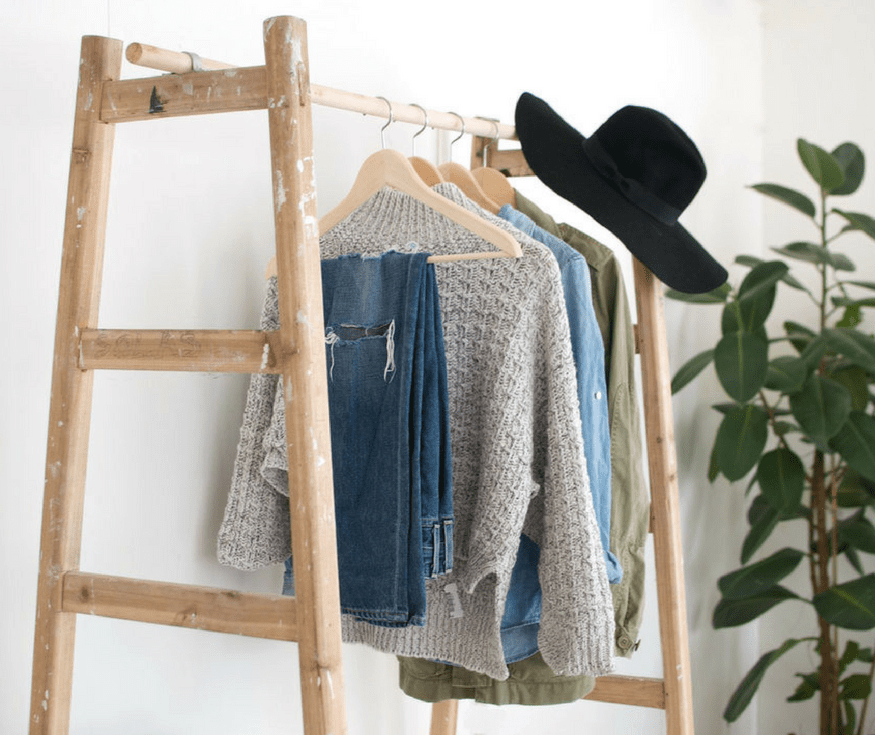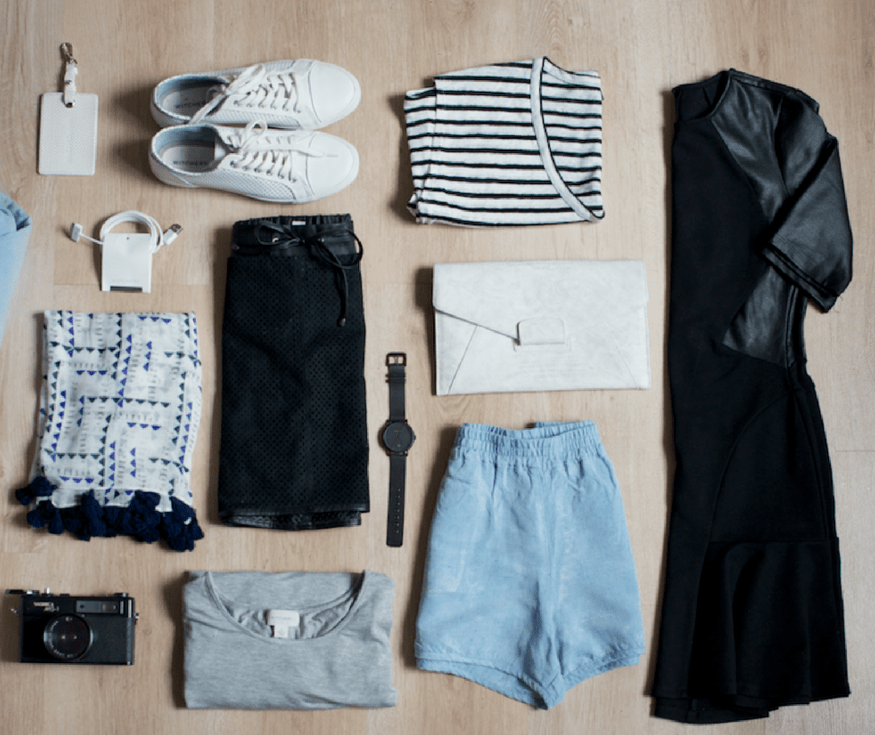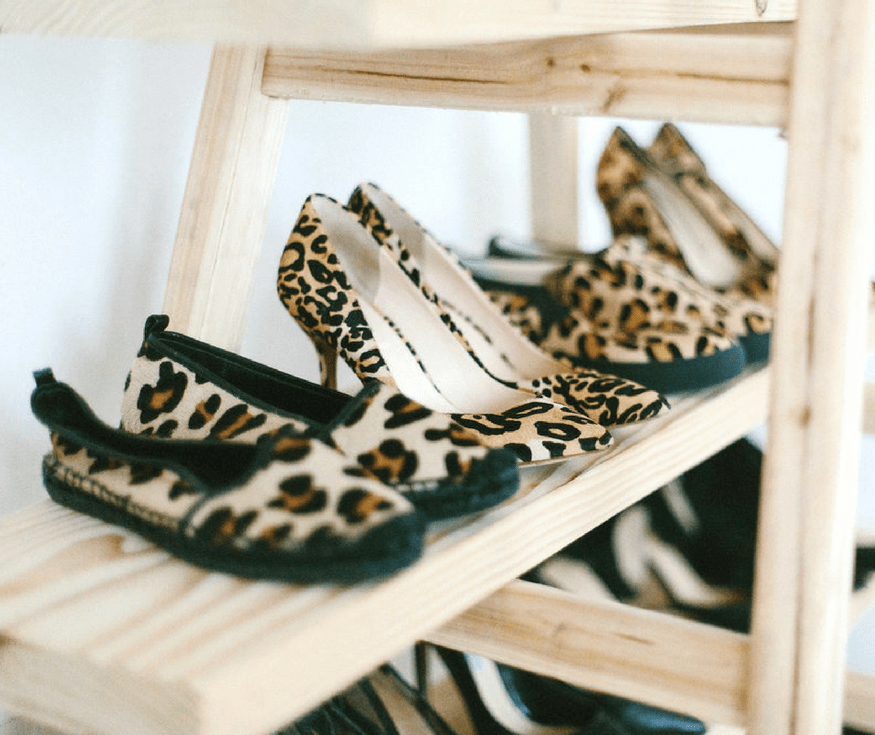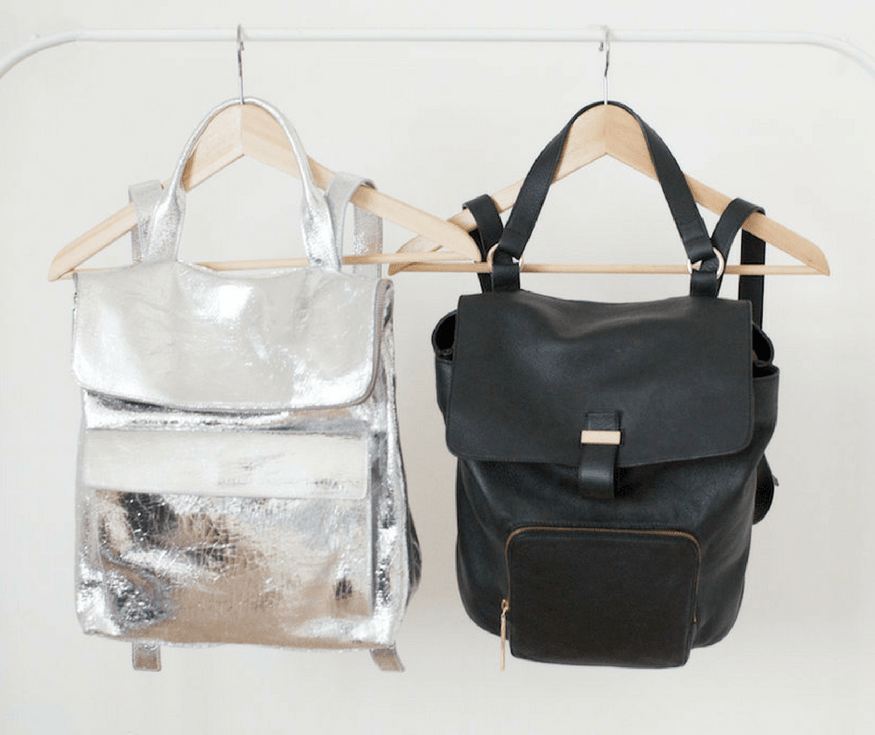The Sustainable Wardrobe Part 1: Building a Capsule
Dressing in a way that does minimal damage to the planet can be difficult. Sometimes a sustainable alternative to our favourite product doesn’t exist yet, sometimes we’re tired and time-stretched and sometimes our budget simply cannot accommodate ideal-world ethics. We can’t be perfect all the time, and that’s okay. When it comes to making ethical clothing choices, the best thing we can do is educate ourselves — to learn about the human hands behind every hem and sleeve. The stories behind the supply chain are stitched into our seams, and being mindful of this is the first step that could just lead to industry-wide leaps.
In the first instalment of our Sustainable Wardrobe series, we’ll be looking at capsule dressing — a concept which promises to break the chains of fast fashion, freeing up much-needed landfill space while also freeing our minds of the daily pressure to get dressed. Come, dear reader. We’ll show you.
Aimee-lee Abraham

What are we dealing with?
The fashion industry is the second most water-polluting industry in the world, after agriculture. Fast fashion is built on an unsustainable process, where the bottom line and speed of the trend cycle are prioritised over all else.
Garments have life-cycles. Raw materials are grown, cloth is manufactured, cloth is cut. Clothes are produced, packed and delivered into retailers. Customers take them home. Items grow tired and are disposed after use. When we walk into the chaotic hustle and bustle of the high street, it is so very easy to look at a shiny, finished product and forget about this cycle entirely. We are detached because the industry encourages us to be so.
By making thoughtful decisions about where we put our money, we can slowly rewrite the rule book. When we know exactly where our clothing comes from, because we cherry-picked it from a thrift shop or took the time to research what we buy, the clothing becomes multidimensional. It has a story and that story is something we can be proud of. Minimalism lends itself very naturally to environmentalism, and if you’re interested in becoming a more conscious consumer, the capsule wardrobe is a most excellent place to begin. If we buy less and buy smart, we can initiate change.
Capsule Dressing & Sustainability
Originally coined in the 1970s by style-guru Susie Faux, capsules favour timelessness, champion personal style and reject fast fashion. The wardrobe itself consists of a small, well-curated selection of essential, high-quality items. These are often interchangeable and colour co-ordinated, providing a wide range of looks from a modest selection. Though associated with hardcore minimalism and immaculate Kinfolk spreads, this isn’t about restriction and piety. It’s not about spending a small fortune on a plain white t-shirt or sterilising your space until it resembles a dentist’s waiting room.
Instead, it’s about curating a wardrobe solely around the things you love, prioritising longevity and filtering out the noise and distraction caused by fleeting trends. It’s about planning your purchases instead of impulsively haemorrhaging pennies on items destined to sit unloved and unworn in a crumpled pile on the floor. It’s knowing what you like and seeking out the best version of what you like in accordance with your budget and lifestyle needs. That way, you can truly covet and cherish the place each item has in your life.
In many ways, it’s a form of protest. Whenever we adopt a respectful and slow attitude to clothes, we are saying “No” to the planned obsolescence of the modern fashion industry and “Yes” to higher standards. The initial steps of mindfully defining (and refining) your style do involve a certain level of patience and introspection, but you’ll be amazed at how rewarding the end-product is, both in a personal sense (you will feel more confident and have more free time) and in an altruistic sense (you will know you are contributing to a more sustainable and fair world).
Sound daunting? I promise it needn’t be so. Let’s start at the beginning.

Step One: Go cold turkey on clothes shopping
Before you can even think about building a capsule, you need to assess your spending habits. Designate a time slot that feels achievable for you — whether that’s a fortnight, a month or several months. Vow not to buy any new items of clothing during this period, and keep a note of patterns or feelings that arise. Do you feel lighter? Heavier? How is your sleeping pattern doing? How about your wallet? To help you on your merry way:
Avoid aimless browsing. Shopping is so often presented as a mindless pastime or hobby. Have you self-soothed by drowning your sorrows in sparkly things? Me too. We know that filling the spaces with things does not make us happy, yet we continue to do it in record numbers. Try your damnedest to resist. If you feel an insatiable spending urge coming on, see if you can think of another activity that could nourish and distract. Go to the park, curl up with a book, call someone you love or grab the nearest dog you can find and cuddle it. Hard.
Keep a Wishlist. More often than not, we panic-purchase “just in case” an item disappears into the ether, and this worry isn’t entirely unjustified. Once upon a time, there were two fashion seasons: Spring/Summer and Autumn/Winter. Now there are fifty-two “micro seasons”; with new items hitting high-street shelves on a weekly basis. If you find yourself lusting over something, write it down. I have a wishlist saved in my iPhone notes and a Pinterest board stuffed with sartorial love letters. This provides calming reassurance that the item is still fully within reach, which allows you to reassess and come back whenever you want to. Spoiler: You probably won’t want to.
Don’t be too hard on yourself, and work with what you already have. When you’re in the market for a life-improving quick-fix, throwing away clothing you love just because it doesn’t fit the minimalist paradigm is like buying dieting pills when you just need to eat healthily and exercise. The collection you already own has probably taken years to collate, albeit in a haphazard way. Throwing everything out is not only wasteful, but potentially self-defeating as the urge to fill the spaces left behind soon rears its head. Instead, use the clothes you already own as a window into the colours and styles you love. It’ll probably be a plethora of different things, which flies in the face of owning just 20 basics.
Track the money you save. You may find it motivating to track your spending for a month before you go cold-turkey so that you can make a direct comparison and see measurable results. I use the Spending Tracker app, which is available to download for free on iTunes.
Find like-minded supporters. We’re here for you at Buy Me Once. Drop us a comment or email to let us know how you’re getting on, and we’ll provide pep-talks and digital hugs. Living well with less is the exact opposite of what our consumerist culture promotes, but you’re not alone in feeling hungry for change. There is a wealth of supportive material available online. YouTube is an excellent resource rife with minimalist bloggers sharing their experiences of the simple life. Some of our favourite accounts include Lavendaire, Carrie Simple and Break The Twitch (below). Hosted by Anthony Ongaro, Break The Twitch is a channel dedicated to living intentionally and building a life in alignment with your values. As well as decluttering and shopping less, Anthony provides help with minimising distractions and building constructive daily routines that will allow you to spend less time fracturing away energy on minutiae and more time to do things you love with the people that matter.
Step Two: Define
Find your style tribe. We’re told to single out a style icon and follow their lead, but most people will find that they’re drawn to a variety of eclectic looks. To ensure that you leave some room for creativity, aim to identify several style icons instead of just one. If you’re unsure of who your key influencers are, start off by searching for ‘Style Icons’ on Pinterest and save the images you’re most drawn to. It’s likely the same people will crop up again and again, and you’ll grow to rely on them for inspiration on dreary days.
Identify key themes. Once you’ve established who inspires you, cherry-pick the specific things you like about their style. Are they modern or classic? Bohemian? Feminine? Loud? Subtle? Clothes are a tool for communication, and our founder Tara Button recommends dressing not only to project who you are, but also to project who you want to be as a person in the world.
Watch out for recurring items and themes in your current closet. We are creatures of habit. As it turns out, I like to pretend I am Audrey Hepburn on routine trips to the supermarket, which perhaps explains how I ended up owning countless turtlenecks and too many trenchcoats. Rather than beating yourself up for wasting cash on near-identical items, use this as a guiding light. By taking stock of repeat offenders you’re already onto something. It’s most likely that the items you reach for again and again are the ones that make your soul sing.
Work what nature gave you. Is there a feature that people tend to compliment you on? Dressing in a way that maximises your natural strengths will never go out of fashion.
Know yourself. You probably already have a strong sense of what suits you and makes you feel like the best possible version of yourself. Don’t fight your natural instincts for the sake of a fleeting trend.
A leopard needn’t change it’s spots if it’s comfortable and content. Embrace your wardrobe’s repeat offenders as a valuable insight into your true taste.

Step Three: Refine
Reserve a full afternoon at the very least to go through your existing wardrobe. Things will need to get worse before they get better, so you need to ruthlessly take everything off hangers and chuck it all into one big pile on the floor. Then, piece by piece, pick everything back up and decide whether to a) Put it back in the cupboard, or b) Donate/recycle it. Only the items that you absolutely love should gain a privileged space.
A thorough detox is a hugely important step on the road to a better curated wardrobe. By starting with a blank canvas, you will soon discover which areas of your closet are already well-stocked and know where there are gaps to be filled. The aim is to gain a clear overview of how your current closet compares to your new-found personal style, so you can set priorities when it’s time to shop for new pieces.
Step Four: Go shopping, with purpose and intent
The final step is the only one that involves (potentially) spending money. Once you have emptied everything and put back only what you need, you can assess whether there are any gaps that need filling. When I did this, I was elated to find I’d already acquired my dream wardrobe without spending a penny. It had been right under my nose all along (buried beneath all of the junk with the tags still on). If and when you decide to go shopping, do so with intent. Switch off your phone. Make the experience a real treat, and savour it.
When your heart sings for a shiny new garment, ask yourself:
- Do I feel good in this? Do I feel my best in this?
- Could I wear this in several different situations?
- Can I mix and match this with other items in my current wardrobe?
- Can I see myself wearing this in a years’ time? How about two? How about five?
Novelty is great, in moderation. Save it for the silver backpack.

We’ll be exploring sustainable wardrobes and personal style in more depth over the next few weeks, so keep your eyes peeled for new fresh content. In the meantime, do let us know: How much of an impact does the source of a garment have on your decision-making process? How do you evaluate the environmental awareness of a brand? How big is the gap between your values and actual purchasing habits? We’d love to hear from you. x
NB: All images featured in this post were shot by style blogger Geneva Vanderzeil. You can check out her flickr account here, which features a wide range of upcycling projects you can try — injecting a new lease of life into old items. We wholeheartedly approve.

Aimee-lee Abraham is a freelance writer and editor and a creative content producer at The Scout Association. Her work has appeared in Oh Comely Magazine, Quench and on BuyMeOnce.



